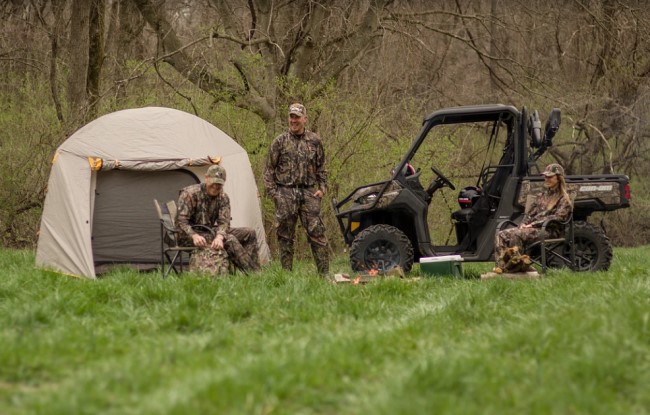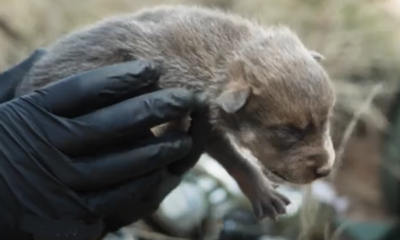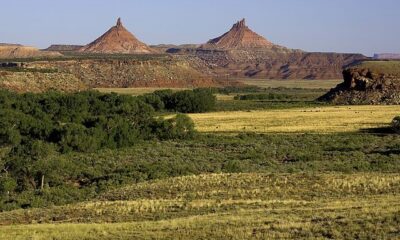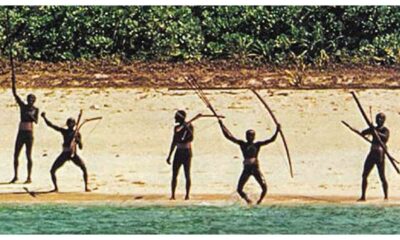Hunting
Mixed Messages: Hunting to Expand on National Wildlife Refuges

Image courtesy NSSF
As outdoorsmen, we’re getting some mixed messages from D.C. here …
Just a couple of months ago, we learned that the Bureau of Land Management had–perhaps somewhat prematurely–announced that it intends to end recreational shooting at the Sonoran Desert National Monument. What was particularly strange about this event was that there really wasn’t any justification for this action. There had been no scientific studies indicating that target shooting was damaging the environment. There had been no injuries. Instead, it was an openly partisan move to simply reverse the expansion of public-lands target shooting that took place under the Trump administration.
There’s since been a tremendous backlash–you readers are partially to thank! It’s reasonable to ask whether today’s news is possibly related. And it is good news (well, mostly) regarding public-land access for citizens who hunt and fish. There’s to be a big expansion of hunting and fishing access. How big? Two hundred eleven thousand acres big.
Interestingly, part of this rollout is that hunters are expected to use lead-free ammunition. As always, there’s no indication that lead bullets have done any environmental damage (sorry, AOC).
Is this expansion of hunting opportunities a sop to outdoorsmen angered by June’s BLM announcement? Perhaps. That said, it’s always good news when public lands are restored to public use, so we’re not going to spend too long looking this gift horse in the mouth. Let’s join the National Shooting Sports Foundation in celebrating this announcement!
~~~~~~~~~~~~~~~~~~~~~~~~~~~~~~~~~~~~~~~~~~~~~~~~~~~~~~~~~~~~~~~~~~~~~~~~
NSSF welcomes the U.S. Fish and Wildlife Service’s (USFWS) announcement that more opportunities will be opened for sportsmen and women to hunt and fish on National Wildlife Refuges (NWR). The USFWS announced that 53 new hunting and fishing opportunities across 211,000 acres on 12 NWRs are being added to the 400 existing NWRs and 35 wetland management areas where hunting and fishing opportunities already exist.
“This announcement of more and expanded hunting opportunities on National Wildlife Refuges is an accomplishment all the firearm industry celebrates, along with all outdoorsmen and women,” said Lawrence G. Keane, NSSF Senior Vice President & General Counsel. “It has long been the goal that hunting opportunities should be opened on public lands and made available to the public. They are the public land owners and the ones who are vested in seeing these hunting opportunities benefit sustainable wildlife conservation. The firearm industry is particularly proud of the conservation investment made by firearm and ammunition manufacturers through the federal firearm and ammunition excise taxes that are the primary driver of wildlife conservation in America.”
NSSF welcomes USFWS’s recent announcement embracing voluntary pilot programs to educate hunters about alternative ammunition options for hunting. Hunters and recreational marksmen should be free to choose the ammunition that will best serve their needs for ethical and efficient harvesting of wildlife.
NSSF is disappointed, however, that today’s opening of additional big game hunting opportunities will restrict the use of traditional ammunition. Wildlife management decisions should be based on sound scientific field data. Restrictions on the use of traditional ammunition should only be imposed where the sound science establishes a wildlife population decline caused by hunters’ use of traditional ammunition and there is no other less-costly remedial measure available to effectively address the issue. Today’s “Hunt-Fish” rule does not set forth such science that would justify restricting the use of traditional ammunition on the newly opened big game opportunities.
NSSF is proud that the firearm and ammunition industry has invested over $27.38 billion, when adjusted for inflation, to wildlife conservation in America since 1937 through the Pittman-Robertson federal firearm and ammunition excise taxes. These taxes, paid by the manufacturers, are dedicated solely for the conservation of wildlife, the habitats in which they thrive, hunter education and construction of new, or expansion of existing recreational target shooting ranges to promote safe and responsible firearms skills, handling and ownership. These 10 to 11 percent excise tax dollars collected for the Federal Aid in Wildlife Restoration Act are specifically designated to be used by state wildlife agencies for conservation and related purposes. Collectively, purchasers of firearms and ammunition, hunters and the industry are the greatest source of wildlife conservation funding.
In 2024, USFWS apportioned over $1.6 billion to the states for wildlife conservation projects, of which $944 million was sourced from Pittman-Robertson excise taxes paid by firearm and ammunition manufacturers.












